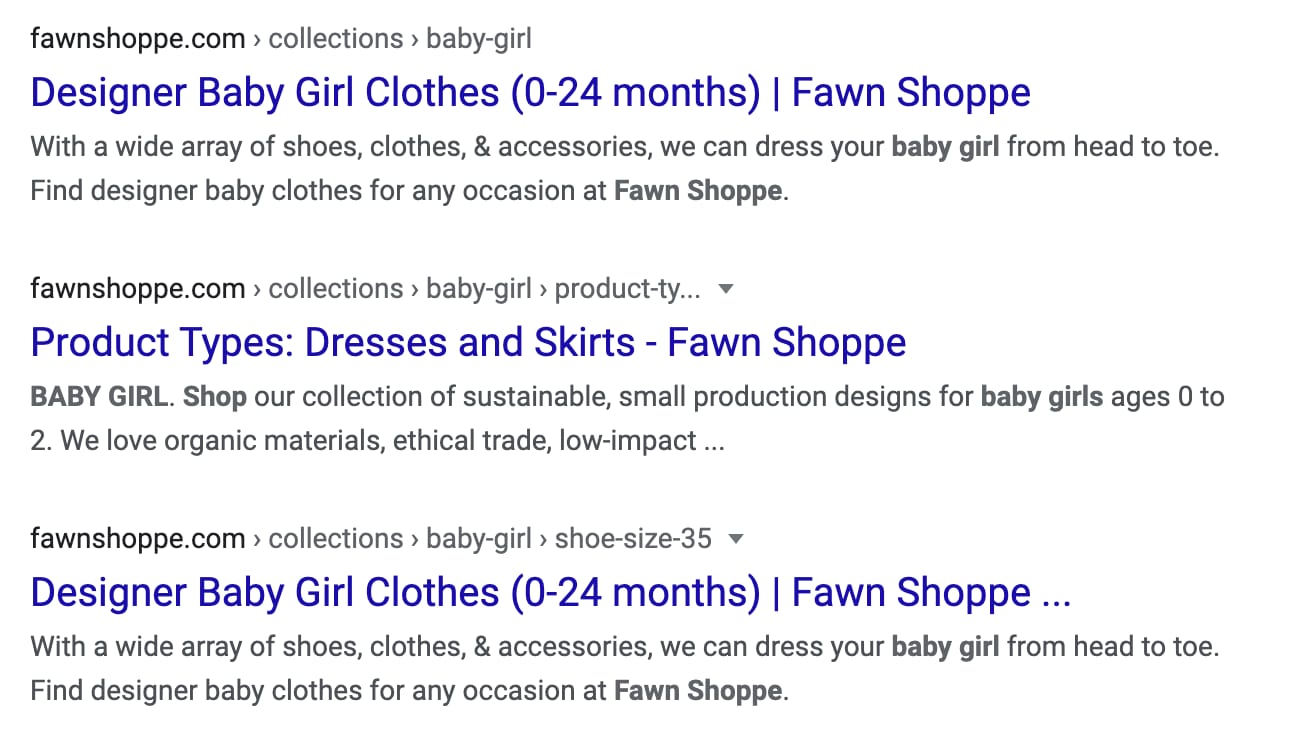
Each type of SEO — on-page, technical and external — effects how your webstore ranks on search engines. While many users understand the basics of on-page SEO, there is a aspect of SEO that often goes unnoticed unless you are a developer: technical SEO. Technical SEO encompasses site structure, crawling, indexing, alt attributes and more. We’ve already created a developer’s guide to help you understand some technical SEO basics, but now we are diving in even further. Keep scrolling to go through this technical search engine optimization checklist for your webstore.
Organize Your Site’s Structure
URLs are not the only elements that need a logical structure. So does your website’s structure as well. Your website’s structure is the organization of all the webpages on your webstore. Since your eCommerce store will have many product pages, you will want a flat structure where your site’s pages are only a few links away from each other. This structure allows your customers to have an easier time jumping between each page but also makes it easier for search engines to crawl 100% of your webstore. A messy structure creates orphan pages with no internal links pointing to them. Orphan pages make it hard to identify and fix indexing issues. Extensions like Ahrefs Site Audit and Visual Site Mapper will give you a birds-eye view of your site’s structure and how the pages link together.
Use a Consistent, Logical URL Structure
Once your site has an organized structure, it’s time to work on your URLs. URLs help users understand where they are on your webstore. While creating your URLs, you do not need to overanalyze their structure but you will want them to be consistent yet logical. And when we say consistent and logical, we mean backslashes or arrowheads that help users and Google understand where they are.
For better understanding, let’s look at the Fawn Shoppe:

Fawnshoppe.com is the homepage, but after that, you start to see the URL titles branch off into other categories like > collections. From there, it continues with > baby-girl, > products and so on. These subcategories not only organize your site but also give search engines extra content to analyze. It also helps Google and users know that all these categories fall under the Fawn Shoppe. Another tip to remember is that shorter URLs rank higher than longer ones. Therefore, try to keep your URLs short and consistent.
Use Breadcrumb Navigation
Breadcrumb navigation is extremely SEO-friendly. It automatically adds internal links to categories and subpages to your website. Adding internal links to your categories and subpages helps solidify your site’s architecture, which makes it easy to scroll, search and land on new pages. A good thing to know about breadcrumb navigation is that Google turns URLs into breadcrumb-style navigation on the search engine results page.
Here’s an example of breadcrumb-style navigation from Island Inn, a company InteractOne works with:

Spot Crawling and Indexing Issues
You want all major search engines to crawl and index your webstore. Crawling is the process where Google crawlers gather information across all the different webpages. Indexing takes the information and content found through crawling and places it into search engines. Once you have a new webstore up and running, you need to look for crawling and indexing issues. You can spot these problems by using extension tools like Screaming Frog, Coverage Reports on Google Search Console or Ahrefs Site Audit. Each one of these tools has its pros and cons, and it is up to your company to do the research and trial sessions. In many cases, companies choose to work with a knowledge marketing firm to look for and fix crawling and indexing issues. It is recommended by SEO specialists to work with professionals due to the level of knowledge needed to understand and implement it.
Use an XML Sitemap
Even though mobile-first indexing and accelerated mobile pages are essential sources to use to locate URLs, search engines like Google state that XML sitemaps are the second most important source in finding URLs. An XML sitemap creates a list of your website’s URLs, which acts as a roadmap to tell search engines what content is available and how to reach it. XML sitemaps help crawlers index webpages faster and more efficiently.
Check the Website for Dead Links
On your webstore, you want all your external and internal links to redirect customers to a working page. Dead links or broken links are links that do not lead to a working or live website page. As a whole, dead links will not make or break your SEO; however, they do make it harder for Googlebots to crawl your company’s pages. SEO specialists recommend websites doing a quarterly SEO audit check that includes searching and fixing broken links. Resolving these links will keep customers engaged and ready to keep scrolling through your website as long as they never reach a dead end.
Implement Hreflang for International Websites
What the heck is hreflang you may be asking? It’s definitely not a foreign treat or fancy car, but does involve helping international websites. Not every company needs to implement hreflang. Webstores that allow international users and purchases should consider having hreflang. It is not worth the investment for domestic brands who do not plan on expanding internationally. Hreflang permits search engines like Google to understand users’ locations to target the specific language they need to use on the site. This allows Google to automatically create different variations of your website for these global shoppers. Implementing hreflang is very difficult. There are many steps, requirements, codes and methods needed to get it started on your site. That’s why hreflang specialists recommend using tools like Aleyda Solis’s Hreflang Generator Tool to do the set-up, monitoring and adjustments. However, since hreflang is confusing and takes loads of work to implement, many specialists highly recommend working with a marketing firm that understands the ins and outs.
Improve the Page’s Loading Speed
An important SEO element that will keep popping up is your webpage’s loading speed. On average, customers leave pages if they take longer than 10 to 30 seconds to load. Shoppers want things fast, and if your site cannot provide fast user experiences, they will move onto the next store. In general, larger pages with high-resolution photos or videos take longer to load than shorter pages with high-resolution media. You can compress your images and videos to help improve the load speed, but you will end up with grainy, unclear photos. And as a webstore, you will want your product images as clear as possible. Instead, keep your high-quality images and videos and opt to a shorter webpage. Other ways to fix your webstore’s loading speed is by caching your site, test using and not using CDNs and eliminating 3rd party scripts.
There are many more ways to improve your SEO as a whole. We’ve already created a guide to help you understand some of the search engine optimization basics to help improve sales. To dive deeper into what SEO tactics will work specifically for your company, contact InteractOne today.

